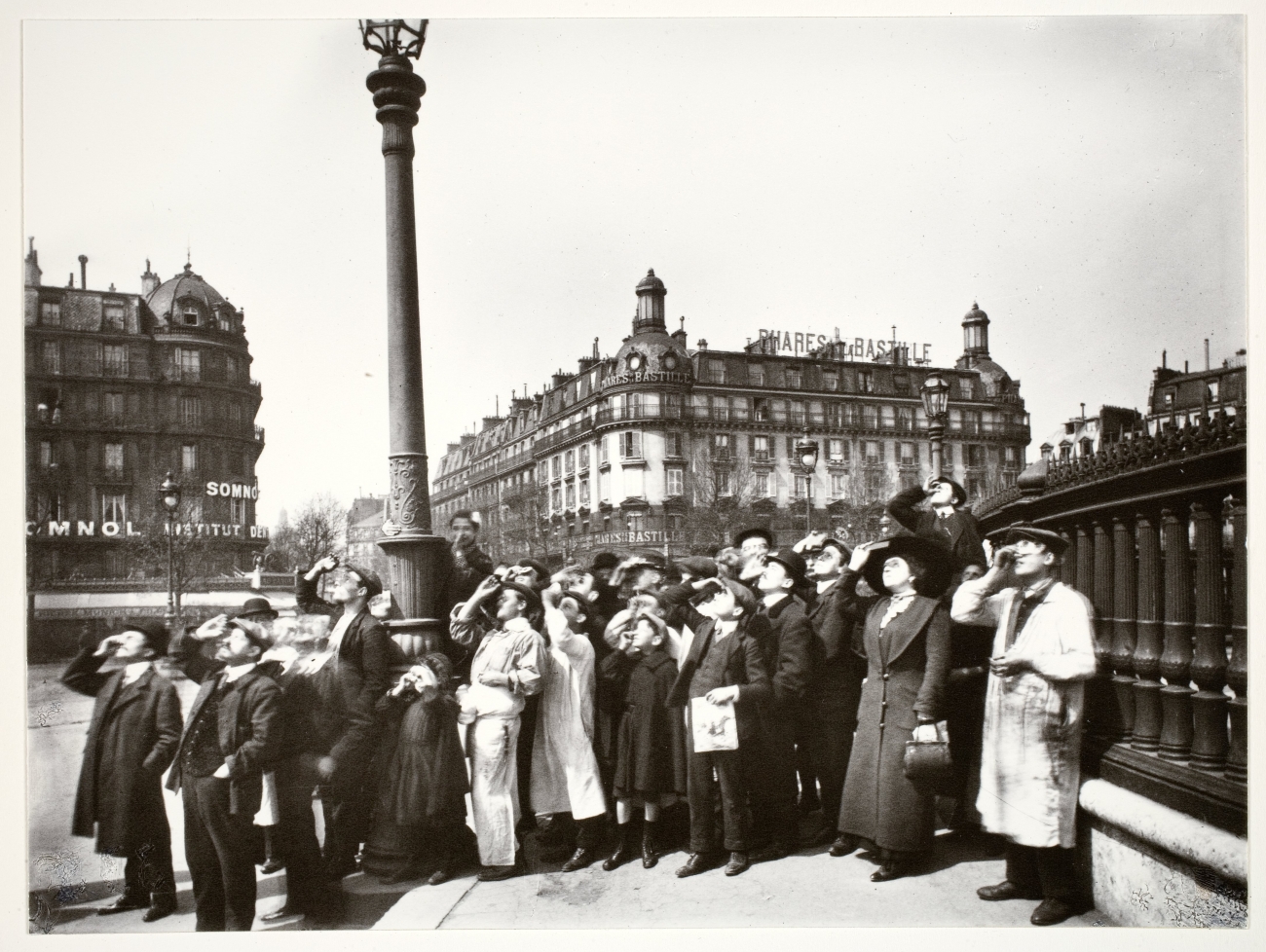L'Eclipse (The Eclipse)

Eugène Atget was not very well known during his lifetime. Today, he is considered a pioneer of documentary photography and celebrated for his images of Paris’s deserted monuments, shop windows and maisons closes (houses of pleasure), among other scenes. American photographer Berenice Abbott, who took a portrait of Atget in 1927, described him as “an urbanist historian, a genuine romanticist, a lover of Paris, a Balzac of the camera, from whose work we can weave a large tapestry of French civilization.”
Atget began his career as an actor. However, after a short period at the Conservatoire d’art dramatique in Paris, he was forced to leave to fulfill his mandatory military service. Afterwards, he briefly attempted a career as an itinerant actor, but by 1888 he gave up acting and started to work as a commercial photographer. During this time, he produced images for painters, illustrators, engravers, and sculptors. Atget was prolific: by 1901 he had already taken 1400 shots of Paris. By around 1912, tired of working on commission, he decided to become an independent photographer and publish his own photographs.
Throughout his career, Atget preferred using close-range lenses. This technique allowed for wide-angle shots, which enabled foreground detail as well as a clear sense of spatial context. After 1900, however, the photographer began favoring close-ups. Part of a series called “Picturesque Paris,” L’Eclipse is a perfect example of the photographer’s focus on the documentation of the Parisian landscape and the people that inhabit it. At the same time, the photograph highlights his subjectivity through stylistic choices such as perspective and the cropped corners of the photograph. This work was later part of an album printed in 1957 by Abbott to celebrate the 100-year anniversary of Atget’s death.
Gaia Lettere ‘15
Davis Museum Curatorial Summer Intern, 2015